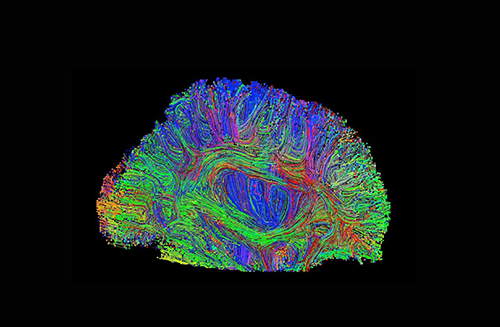![Scientists are beginning to crack the brain's genetic code—discovering how variations in our DNA affect the development and structure of our brains. In a recent genome-wide association study, scientists identified five previously unknown loci for brain size and confirmed two known signals. Variants were also related to childhood and adult cognitive function as well as the risk for Parkinson’s disease. [Paul Thompson/ENIGMA Center, USC]](https://genengnews.com/wp-content/uploads/2018/08/Oct6_2016_ENIGMA_Brain2432552431-1.jpg)
Scientists are beginning to crack the brain’s genetic code—discovering how variations in our DNA affect the development and structure of our brains. In a recent genome-wide association study, scientists identified five previously unknown loci for brain size and confirmed two known signals. Variants were also related to childhood and adult cognitive function as well as the risk for Parkinson’s disease. [Paul Thompson/ENIGMA Center, USC]
Whether or not brain size matters is a question that has received only tentative and highly qualified answers. Hoping to be more definite, an international team of scientists addressed the question again, but this time they did so while ensuring their study had something previous studies lacked—size.
Proceeding with the conviction that it is the size of the brain study that matters, the scientists evaluated 32,438 subjects, far exceeding the scale of previous studies, which typically topped out at around 100. The scientists, who made use of magnetic resonance imaging (MRI) and whole-genome sequencing, identified genetic hotspots that regulate brain growth, memory, and reasoning.
The scientists also found genes that appear to influence the onset of Parkinson’s disease. In fact, this research supports the notion that brain size could be used as a measure of “brain reserve,” meaning brain size can promote resilience to age-related brain diseases.
Details of the study appeared October 3 in the journal Nature Neuroscience, in an article entitled, “Novel Genetic Loci Underlying Human Intracranial Volume Identified through Genome-Wide Association.” The article described how the scientists discovered five previously unknown loci for intracranial volume and confirmed two known signals. (Four of the loci were also associated with adult human stature, but these remained associated with intracranial volume after adjusting for height.)
“Variants for intracranial volume were also related to childhood and adult cognitive function, and Parkinson's disease, and were enriched near genes involved in growth pathways, including PI3K [phosphatidylinositol-3-kinase]-AKT signaling,” wrote the article’s authors. “These findings identify the biological underpinnings of intracranial volume and their link to physiological and pathological traits.”
Participating in the study were more than 100 scientists, who were led by Paul Thompson, Ph.D., associate director of the USC Mark and Mary Stevens Neuroimaging and Informatics Institute. According to Dr. Thompson, brain measures from MRI account for about 15% of the differences in our cognitive ability. Also, brain development is regulated by genes that have far-reaching effects that extend well beyond the initial years of life, as well as beyond a person’s early 20s, the time when the brain reaches its maximum size.
“You have genes that are beneficial for you and help build brain structures early in life,” noted Dr. Thompson. “Yet some of these are harmful later in life and promote diseases such as Parkinson’s.”
Both genetics and environmental factors affect brain size. Good diet, education, and exercise build a healthy brain in young people and protect older people from tissue loss.
“This research is on the leading edge of cracking the brain’s genetic code,” Dr. Thompson continued. “Millions of people carry variations in their DNA that help boost or lower their brains’ susceptibility to a vast range of diseases. Once we identify these genes, we can target them with drugs to reduce the risk of disease. People also can take preventive steps through exercise, diet, and mental stimulation to erase the effects of a bad gene.”
The seven genes scrutinized in the current study provide links between an individual’s maximum brain size and processes such as:
- the production of self-renewing stem cells (FOXO3)
- brain degeneration (MAPT)
- bone density (CENPW)
- physical growth (IGF1, HMGA2)
- DNA replication (GMNC)
- the creation of chemical bonds and proteins (PDCD).
Of note, one of the areas of the human genome that affects brain size has a normal version and an inverted alphabet variant that evolved some 3 million years ago, Dr. Thompson said.
“MAPT is one of the most dangerous genes in this inverted zone,” he explained. “It is implicated in neurodegenerative diseases such as frontotemporal dementia and Parkinson's, Alzheimer's, and Lou Gehrig's disease. Even in the normal brain-size range, brain scans reveal telltale signs of future disease.” Ongoing studies may reveal additional brain conditions that are promoted by the tau-associated MAPT gene.
“The genetic program that builds our brains consists of growth factors, cancer genes, genes that promote dementia, and genes that are crucial in helping the brain to form connections,” Dr. Thompson concluded. “A complex interplay of factors makes some genes that are beneficial in early life go rogue later in life. It's extremely important to understand when genes that affect brain size—such as the MAPT gene—are helpful and what parts of the brain they are influencing.”







